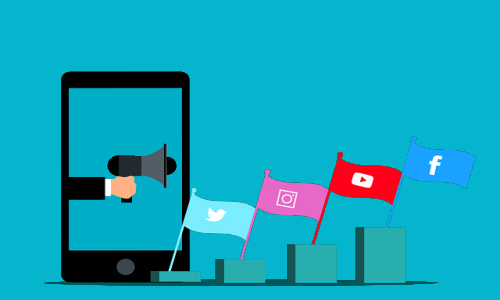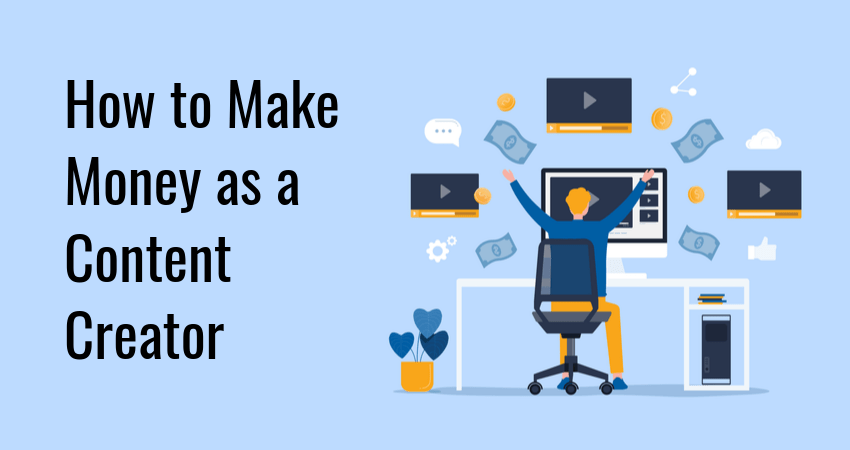Here is our list of the best content creators on YouTube, Instagram, and TikTok to…

Content Monetization Trends for 2022
Most online content is produced solely for commercial gain.
Countless websites, videos, blog posts, images, and apps exist for the purpose of generating profit for the handful of tech companies at the top. Google, Amazon, and Facebook hold a collective monopoly on social media, ecommerce, and web search. Their corporate strategy defines the trends that shape the web, including content monetization trends.
Let’s take a look at how tech moguls expect us to monetize our content in 2022.
By joining Glimpse as a content creator, you avoid paying hefty commissions on your income. Your money is only yours, and Glimpse charges 0% commission fees!
6 Content Monetization Trends
These 6 trends are representative of the content industry as a whole and are largely a continuation of methods used in the past 10 or so years. Here is everything you need to know about content monetization
1. Affiliate Marketing

Affiliate marketing is a monetization model where companies compensate content creators, i.e., affiliates, for generating traffic or leads to the company’s products and services. Companies typically pay affiliates per sale generated.
Affiliate marketing is an old practice, but the rise of ecommerce has turned it into a billion-dollar industry. According to Business Insider, 15% of ecommerce revenue can be directly attributed to affiliate marketing.
The biggest user of affiliate marketing is Amazon, which offers commissions between 1-10% per sale. The rate depends on the product, but thanks to Amazon’s ever-expanding list of product offerings, content creators have ample opportunities to insert relevant affiliate links in their content.
2. Merchandizing

Another potential revenue stream for content creators is selling branded merchandise. The practice became commonplace when content creators moved out of isolated Web 2.0 communities such as forums and blogs and entered the mainstream via platforms such as YouTube, Instagram, and Twitch. Their popularity skyrocketed, giving rise to many merchandising opportunities.
Today, every popular content creator offers some kind of merchandise for sale. Physical goods such as t-shirts, mugs, and keychains remain the most popular choice. However, some content creators are experimenting with digital items, such as in-game skins, voice packs, and even full-blown video games that feature their likeness.
As branded merchandise becomes cheaper to produce thanks to modern technologies such as 3D printing, we are likely to see even more content creators use merchandising as a supplementary revenue stream.
Learn everything you need to know about live stream monetization.
3. Advertising

Advertising continues to be the most popular content monetization model in 2022. The advertising ecosystem is dominated by Google and Facebook, so most content creators use website ad banners, social media ads, and video ads.
Each advertising platform has its own policies regarding how much money you earn per visit, view, or interaction. They also have rules and technical guidelines for publishing ads. Content creators must follow these guidelines to ensure that AI-driven advertising algorithms will display their ads to the appropriate audience.
In general, advertising is still the most reliable method of monetizing digital content. Once you hit a certain threshold in terms of traffic, you can start supplementing your income through advertising.
Glimpse offers content creators multiple methods to monetize their work. Sign up as a Glimpse Creator and start monetizing your content with Glimpse’s sponsorship system. Don’t worry about fees – Glimpse has 0% platform fees for content creators.
4. Content Paywalling

Gated content is a relatively recent content monetization strategy. The idea is simple: offer some content for free and place the rest behind a paywall. Followers can then unlock the content either by paying a one-time fee or through recurring donations.
The success of this strategy relies on three things: a large content portfolio, regular content updates, and a dedicated fanbase. Once a content creator fulfills these criteria, they can begin paywalling their content using a content monetization platform.
It is common practice to separate content into regular and premium. Regular content typically introduces a certain topic, while premium content is usually a further elaboration on the subject matter.
5. Omnichannel Marketing

For content creators, omnichannel marketing represents the practice of using consistent and recognizable messaging across different communication channels. It is not a monetization strategy in itself but a way to enhance existing monetization schemes. The strategy is typically used by commercial brands, but some content creators are leveraging the approach with good results.
Omnichannel marketing leverages the fact that content creators typically have a presence on multiple platforms, including personal websites, social media profiles, messaging apps, and content distribution networks such as YouTube. Consistency across these different channels means content creators can entice more consumers to support their work.
Today, omnichannel marketing is easier than ever to implement thanks to marketing automation software. These tools make it easy to align content across different channels and ensure consistency of tone.
6. Donations

Donations are slowly but surely overtaking advertising as the most popular method for earning money from digital content. Their main advantage is that they’re flexible, voluntary, and non-intrusive, which is why content creators from all niches have started embracing them.
One of the main factors that contributed to the popularity of donations is the rise of crowdfunding platforms such as Kickstarter, Patreon, and others. These services offer a convenient way for fans to support their favorite creators, and the trend is expanding.
Today, practically all content platforms have built-in support for donations. It’s now easier than ever to fund your content production efforts without resorting to third-party monetization platforms. A tipping jar is all you need to stay afloat and even earn a profit.
The Future of Content Monetization
There are several possible directions in which content monetization will evolve in the age of Web 3.0. All are still highly speculative, but we can reasonably assume that the following factors will play a major role:
- Blockchain – Crypto-currencies and other blockchain technologies such as NFTs are redefining what can be sold as content. We can expect to see more content creators selling their work for virtual tokens, speculative financial assets that offer new ways to generate profit.
- AI-Generated Content – AI is becoming more and more adept at producing content that matches hand-crafted content in terms of quality. This trend will become a game-changer if it continues, as content creators will have to compete against intelligent machines to stay relevant.
- Intelligent Search – Search engine algorithms are getting better at understanding the intent behind the search. This will make it easier to produce content without worrying about technical details such as keyword-based SEO.
- Censorship – Media tech companies are increasingly eager to censor content they deem inappropriate for whatever reason. This puts pressure on content creators to adjust their content to avoid censorship, lest they get demonetized or outright banned.
Conclusion
Content monetization is evolving each year, and 2022 is set to continue the trend. Old methods are undergoing modification to better suit the needs of modern audiences, and new ones are being developed as we speak.
One thing remains certain – content is still a hot commodity, and as long as there is demand for your digital creations, there will be ways to earn from them.



